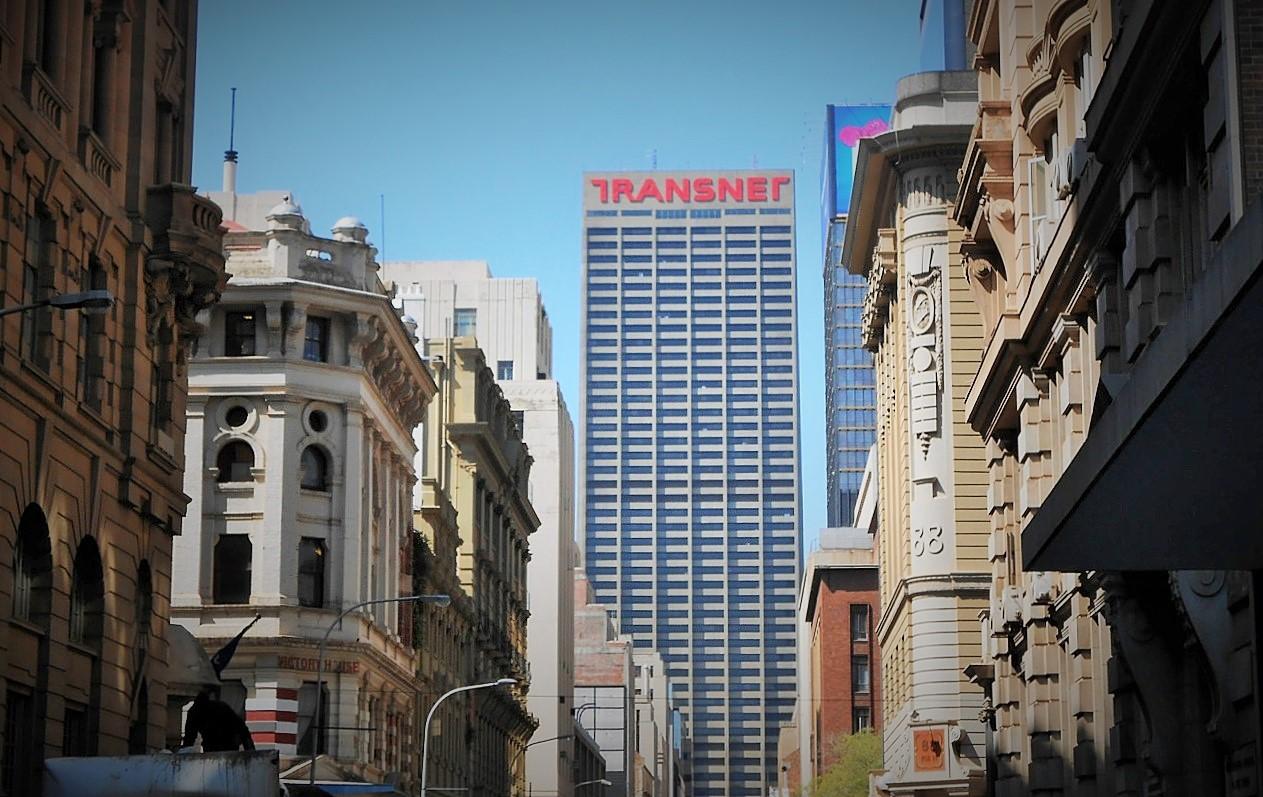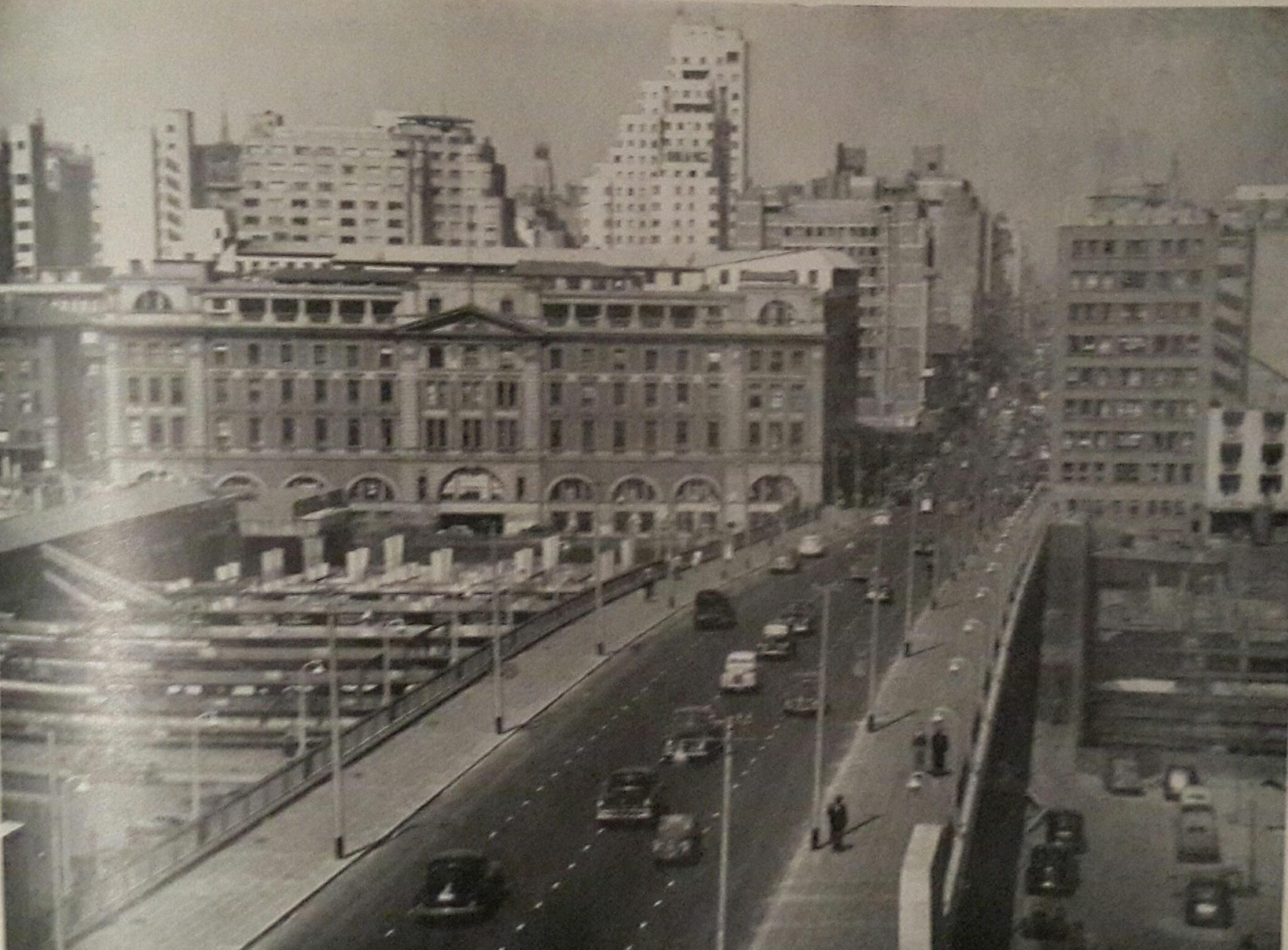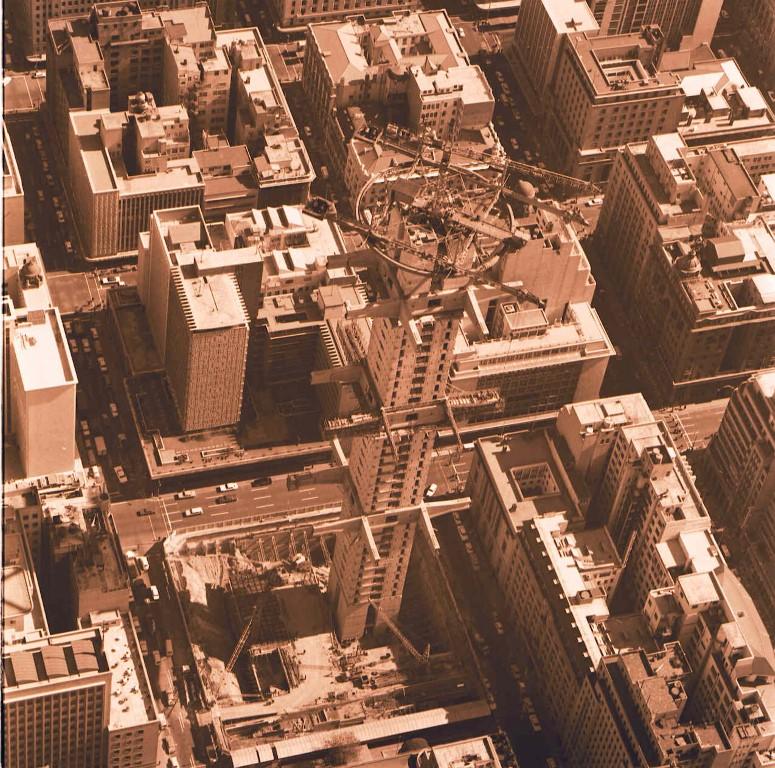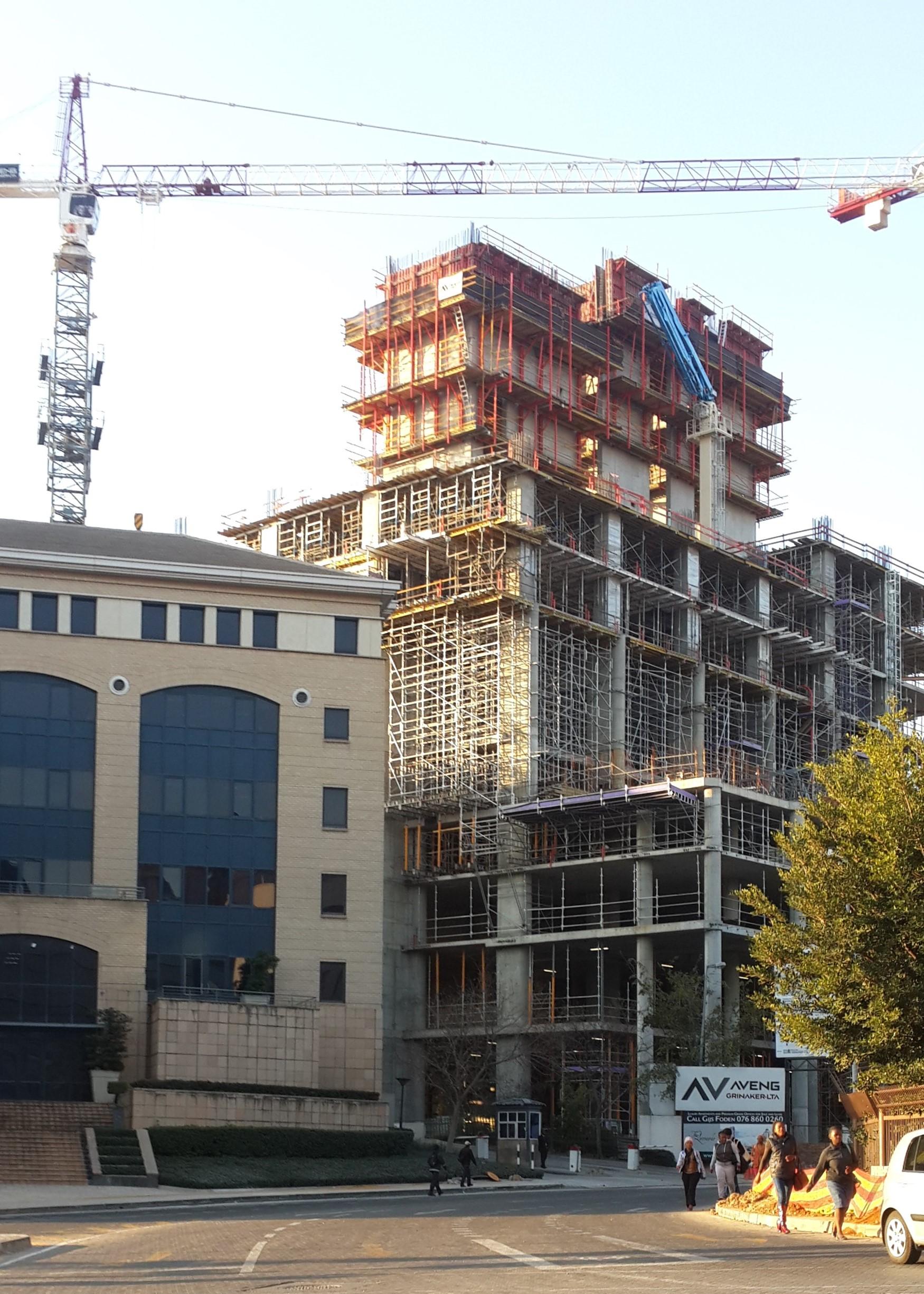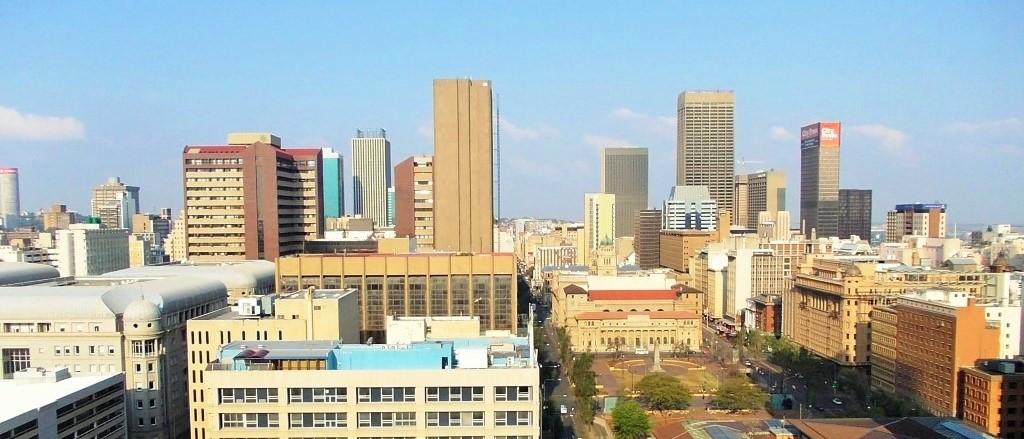
Disclaimer: Any views expressed by individuals and organisations are their own and do not in any way represent the views of The Heritage Portal. If you find any mistakes or historical inaccuracies, please contact the editor.
News broke recently that work on Africa’s tallest building has commenced (click here for details). Assuming it will be completed as designed, the Pinnacle in Nairobi Kenya will be 300m tall eclipsing the Carlton Centre by quite a margin. The fact that the Carlton has managed to hold the record of Africa’s tallest building for over four decades is remarkable. It got me thinking about the context of the late 1960s and early 1970s that led to an explosion of towers across Johannesburg. In the short article below, I will highlight a combination of factors that contributed to the surge in height that transformed the Johannesburg skyline into the one we know today.
Looking up Fox Street towards the Carlton Centre (The Heritage Portal)
Arguably the most important factor was the stellar performance of the South African economy during the 1960s and early 1970s. Various sources state that the country achieved growth rates exceeding 7% for a prolonged period. The stock exchange boomed, new companies were formed and an overall mood of confidence and swagger developed. Johannesburg was awash with money and, with the property sector booming, much of it found a home in ambitious CBD projects. A fellow Joburg enthusiast once ventured the view that the atmosphere in 1960s Joburg could be compared to that of Dubai in recent years.
Robust economic growth certainly provided the foundation for a construction boom but on its own it wasn’t enough to transform the skyline. It required ambitious and tenacious individuals to channel money into tower projects. In his book Johannesburg Transition: Architecture & Society from 1950, Clive Chipkin mentions that a younger generation returning from America with MBAs became obsessed with height. To be modern was to build tall. Businessmen, entrepreneurs and architects armed with new ideas played a key role in overcoming obstacles and pushing Johannesburg beyond the height limits established during the boom years of the 1930s.
Looking across Rissik Street Bridge in the 1950s revealing some of the skyscrapers of the 1930s (Seventy Golden Years)
A key obstacle that lay in the path of this new generation was a planning rule that stated that a building could not exceed a 59 degree line drawn from the opposite side of the street. This was not an arbitrary rule to constrain ambition but one designed to ensure that light and air could enter the city. Chipkin describes how even the most creative architects struggled to push the design of a building beyond 20 storeys in this context. As the 1960s unfolded, property developers and architects backed by savvy lawyers pushed city officials to change the planning rules. The pressure eventually paid off with the Council deciding to allow extra height if a building was set back at least 2.7m from the sidewalk. In his book A City Divided, Nigel Mandy highlights that in addition to this, extra bulk could be gained on a project if ‘areas of public interest open to the sky’ were provided. This paved the way for superblock developments with wide open plazas.
The famous Standard Bank hanging skyscraper under construction in the late 1960s (Standard Bank)
Overall the combination of excess cash during a prolonged economic boom, the vision of tenacious businessmen, entrepreneurs and architects and the change in the planning laws created the momentum for Johannesburg to burst upwards. Unfortunately, many landmark buildings became casualties of the race for modernity during this period. By the mid-1970s, the boom had run out of steam and property developers were forced to constrain their ambitions.
Despite exciting announcements from time to time, no building in South Africa has come close to exceeding the height of the Carlton Centre. Sandton does have a new skyscraper under construction (click here for details) but the most optimistic height estimates still fall well below the Carlton’s 223m. Perhaps the loss of the record of Africa's tallest building to Nairobi will provide the catalyst for Johannesburg* to reach for the skies again (Click here to view an article on Johannesburg's tallest buildings over time).
[Update - As many readers will know, the Leonardo in Sandton is now the tallest building reaching a heught of 234m)
The Leonardo under construction in June 2017 (The Heritage Portal)
* Most probably Sandton or one of the other major nodes developing to the north.
Comments will load below. If for any reason none appear click here for some troubleshooting tips. If you would like to post a comment and need instructions click here.

